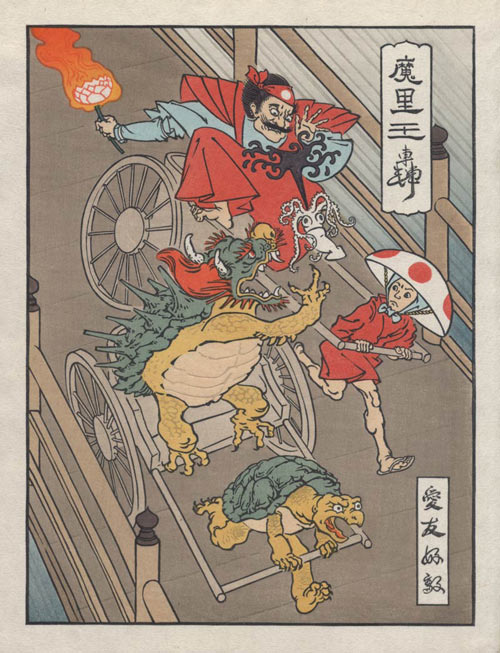Ukiyo-e Heroes
I can make a rather extraordinary statement - there are no more than a handful of people on this planet who 'know' Japanese traditional ukiyo-e prints as well as I do. I should perhaps amend that to read - as well as I, and the few other remaining carvers, do.
In the course of making each of our prints, we of necessity go over each and every line, and each and every dot in the image with our cutting blades. We study the curves, the ebb and flow of the lines, and the 'press and release' of each brush stroke in the original. By the time we have finished cutting a block, we 'know' that image probably even better than the person who created it. And in my case (and perhaps a few of the other workers) I do this twice, as I first trace the entire thing with a pen (or tablet) in order to prepare a clear transfer for guiding the subsequent cutting work.
In the more than thirty years that I have been doing this, I have cut images by all of the 'old masters', some of them in many versions, and have thus come to know these men very well. A brush stroke by Moronobu (or one of his contemporaries) is vastly different from one by Hokusai, and this differs yet again from the men who followed him.
I myself certainly can't draw like any of them, even after all this training; that's a completely different skill of course. But I know it when I see it ...
And it's also not much of an exaggeration to say that the carver cutting a design must share to some extent the feeling that the designer must have had when brushing those original strokes. When cutting the smooth and fluid line of a kimono worn by one of the poetesses drawn by Katsukawa Shunsho in his Hundred Poets series, I did so in a peaceful and serene manner. But when cutting the agitated lines of the fabrics on a warrior in a Hokkei surimono, I myself become agitated to some degree. It's simply unavoidable to 'pick up' the mood of the work on one's table.
But this past week, I have had a rather novel experience. I have spent many hours cutting lines on a design that matched nothing I have done before. I found myself thinking, "Who did this? Who would draw like that? I have never seen anything like this before!"
And as for the mood ... Well, what mood would you be in when faced with cutting a design that features a strange demonic creature sitting in a rickshaw being pulled at fantastic speed by a lanky-legged turtle, a squid being hurled through the air, spraying ink as it goes, and an Italian plumber dressed in the most formal kamishimo clothing ...
Eh? This is a traditional Japanese print?
Well, if illustrator Jed Henry and I are successful in our new project to create woodblock prints using the traditional Japanese methods and based on traditional themes - 'traditional' here meaning themes from popular culture, just as was the case hundreds of years ago - then yes indeed!
The Italian plumber I mentioned above is of course a depiction of the hero of a well-known video game, and the others are his supporting characters. These characters are known and loved by millions of people around the world, and Jed and I see this as a chance to bring the beauty and fascination of the traditional Japanese print to a whole new global audience. This may be the most foolish thing we have ever done, or it may change our lives.
Put your quarter in the slot (do they still do that?), and stand back!
Story #339, June 24, 2012

Comments on this story ...



Posted by: Dave
Readers interested in following along with the progress of this print (and the entire project) can do so in two places: my Mokuhankan Ukiyoe Heroes page, or the Ukiyo-e Heroes Facebook page that Jed is running for it.